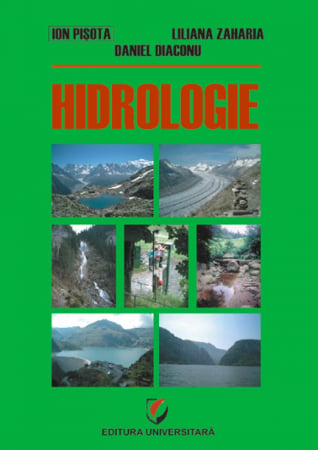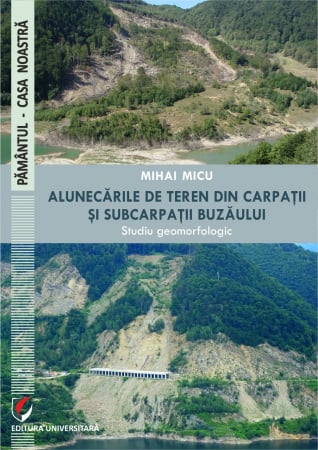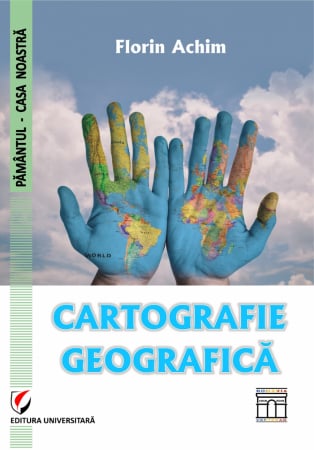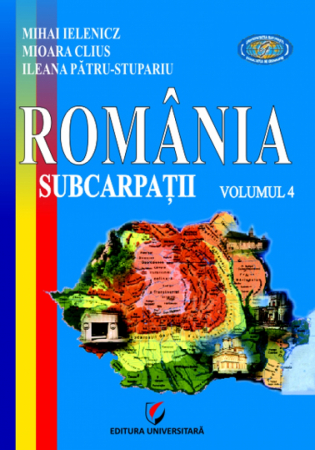Manuscript proposals: [email protected] / 0745 204 115 //// Tracking orders Individuals / Sales: 0745 200 357 / Orders Legal entities: 0721 722 783
ISBN: 978-606-28-0435-0
DOI: 10.5682/9786062804350
Publisher year: 2016
Edition: I
Pages: 156
Publisher: Editura Universitară
Author: Constantin Nitu, Tiberius Tomoiaga
Product Code:
9786062804350
Do you need help?
0745 200 357
- Description
- Download (1)
- Authors
- Content
- More details
- Reviews (0)
The paper deals with the activities of design and implementation of systems, addressing GIS specialists, but also those who monitor the implementation and use of the system or who prepare feasibility studies and specifications necessary for different subsystems or the system as a whole.
-
PROIECTAREA ŞI IMPLEMENTAREA SISTEMELOR INFORMATICE GEOGRAFICE
Download
CONSTANTIN NITU
TIBERIUS TOMOIAGA
TIBERIUS TOMOIAGA
Foreword / 9
Chapter 1: Geographic information system / 11
1.1 Classification of geographical information systems / 15
1.2 Components of the geographical information system / 16
1.3 General and dedicated geographical information systems / 19
Chapter 2. GIS project management./ 23
2.1 The failure of a project / 24
2.2 Tools specific to project management / 25
2.3 Organization of human resources / 27
Chapter 3: Requirements assessment and analysis / 30
3.1 Organizational implications / 30
3.2 The need for training / 31
3.3 Tracking user expectations / 31
3.4 Requirements assessment / 32
3.5 Assisting current users / 32
3.6 User categorization / 33
3.7 Factors determining the requirements and examples of applications / 34
3.8 Assembling the requirements / 49
3.9 Elements of a feasibility study / 49
Chapter 4: Scheme for designing GIS / 52 databases
4.1 Types of databases in a GIS / 52
4.2 Aspects of database design / 57
4.3 Metadata / 64
Chapter 5: Spatial data design / 67
5.1 Generalities / 67
5.2 Vector data, raster data and grid data / 69
5.3 Geographic data structures / 75
5.4 Conclusions on data structures / 78
5.5 Choosing the data model for the analyzed example / 79
5.6 Layers and objects / 79
5.7 Layer accuracy / 79
5.8 Choosing a coordinate system and cartographic projection / 80
5.9 Spatial indexing / 81
Chapter 6: Designing the structure of thematic data or attributes / 82
6.1 General principles regarding the fields of tables D and G / 83
6.2 Principles specific to tables G / 84
6.3 Principles for the fields of tables D / 84
6.4 Design of input elements / 85
6.5 Design of output elements / 85
6.6 Application design / 87
Chapter 7: Data acquisition and conversion, implementation phase / 88
7.1 Implementation plan / 88
7.2 System architecture / 88
7.3 Data acquisition and conversion / 91
7.4 Digital data collection / 92
7.5 Selecting the data collection company / 99
7.6 Carrying out a pilot project / 100
Chapter 8: Selecting hardware and software for implementation / 101
8.1 Software Considerations / 102
8.2 Hardware Considerations / 108
Chapter 9: Organizational aspects taken into account when designing a GIS / 114
9.1 User attributions / 114
9.2 Staffing for design and implementation / 115
9.3 Arrangement of GIS / 115 components
Chapter 10: Subsequent management issues and system interaction / 117
10.1 BD Consultant and Viewer / 117
10.2 Spatial Data Editor / 118
10.3 Attribute data editor / 119
10.4 Application Developer / 119
10.5 GIS / 120 database administrator
10.6 User attribution management / 120
10.7 Desktop Interface Analysis / 121
10.8 Analysis of Web interfaces / 121
10.9 Interaction between GIS and organization / 122
10.10 Final management problems at the interaction with the system / 123
10.11 Option for a new management team / 123
10.12 Evaluation / 124
10.13 Access control / 124
10.14 Maintenance plan / 125
10.15 Data provision issues / 127
BIBLIOGRAPHY / 130
Annex no. 1: Example of a call for proposals for a GIS / 135
Annex no. 2: Example of a feasibility study for a GIS (table of contents only) / 139
Annex no. 3: Examples of GIS / 140 functionality evaluation criteria
Glossary of terms GIS / 146
List of figures / 153
List of tables / 155
Chapter 1: Geographic information system / 11
1.1 Classification of geographical information systems / 15
1.2 Components of the geographical information system / 16
1.3 General and dedicated geographical information systems / 19
Chapter 2. GIS project management./ 23
2.1 The failure of a project / 24
2.2 Tools specific to project management / 25
2.3 Organization of human resources / 27
Chapter 3: Requirements assessment and analysis / 30
3.1 Organizational implications / 30
3.2 The need for training / 31
3.3 Tracking user expectations / 31
3.4 Requirements assessment / 32
3.5 Assisting current users / 32
3.6 User categorization / 33
3.7 Factors determining the requirements and examples of applications / 34
3.8 Assembling the requirements / 49
3.9 Elements of a feasibility study / 49
Chapter 4: Scheme for designing GIS / 52 databases
4.1 Types of databases in a GIS / 52
4.2 Aspects of database design / 57
4.3 Metadata / 64
Chapter 5: Spatial data design / 67
5.1 Generalities / 67
5.2 Vector data, raster data and grid data / 69
5.3 Geographic data structures / 75
5.4 Conclusions on data structures / 78
5.5 Choosing the data model for the analyzed example / 79
5.6 Layers and objects / 79
5.7 Layer accuracy / 79
5.8 Choosing a coordinate system and cartographic projection / 80
5.9 Spatial indexing / 81
Chapter 6: Designing the structure of thematic data or attributes / 82
6.1 General principles regarding the fields of tables D and G / 83
6.2 Principles specific to tables G / 84
6.3 Principles for the fields of tables D / 84
6.4 Design of input elements / 85
6.5 Design of output elements / 85
6.6 Application design / 87
Chapter 7: Data acquisition and conversion, implementation phase / 88
7.1 Implementation plan / 88
7.2 System architecture / 88
7.3 Data acquisition and conversion / 91
7.4 Digital data collection / 92
7.5 Selecting the data collection company / 99
7.6 Carrying out a pilot project / 100
Chapter 8: Selecting hardware and software for implementation / 101
8.1 Software Considerations / 102
8.2 Hardware Considerations / 108
Chapter 9: Organizational aspects taken into account when designing a GIS / 114
9.1 User attributions / 114
9.2 Staffing for design and implementation / 115
9.3 Arrangement of GIS / 115 components
Chapter 10: Subsequent management issues and system interaction / 117
10.1 BD Consultant and Viewer / 117
10.2 Spatial Data Editor / 118
10.3 Attribute data editor / 119
10.4 Application Developer / 119
10.5 GIS / 120 database administrator
10.6 User attribution management / 120
10.7 Desktop Interface Analysis / 121
10.8 Analysis of Web interfaces / 121
10.9 Interaction between GIS and organization / 122
10.10 Final management problems at the interaction with the system / 123
10.11 Option for a new management team / 123
10.12 Evaluation / 124
10.13 Access control / 124
10.14 Maintenance plan / 125
10.15 Data provision issues / 127
BIBLIOGRAPHY / 130
Annex no. 1: Example of a call for proposals for a GIS / 135
Annex no. 2: Example of a feasibility study for a GIS (table of contents only) / 139
Annex no. 3: Examples of GIS / 140 functionality evaluation criteria
Glossary of terms GIS / 146
List of figures / 153
List of tables / 155
Geographic Information Systems (GIS) have a special importance in the new stage of development of the computerized society. The emergence of new versions of collection, processing and management applications for geographic data on personal computers, including the use of computer networks, has led to a continuous increase in the number of users of these systems. There is no field of activity in which geographical data are not used. Of these data, position data and attribute data play a special role. By processing them or by direct query, one can obtain the positions of some objects or phenomena, the areas of some terrestrial surfaces, the volumes of stripping or filling, the flows of some flows, the lengths of some transport routes, the optimal positions of some constructions, etc. Applications involve structuring data and creating geographic databases, more complex than ordinary databases.
These geographical databases must allow easy, easy and quick answers, the calculation of data-derived sizes, the creation of complex reports, including maps, charts, diagrams, cartograms or even cartographic animations, etc., the visualization being much easier and understood. by each user (Nitu, C., 1992).
There are many opinions on the use of the terms "geographic information system" and "geographic information system". It is known that the computer system is that part of the information system that involves the exclusive use of the electronic computer. But can we still talk about the information system without using the electronic computer?
The dilemma also comes from the different translation of the English expression "geographic (al) information system" (GIS). Our option is also related to the role of data, in general of geographical information, this information being the object of knowledge, structuring, collection, validation, storage, processing, management and supply.
The introduction of the discipline "Geographic Information Systems" or GIS, even under another name, in the study program of the Faculty of Geography of the University of Bucharest has proved its usefulness for over a decade. Notions such as geographic database, computer-assisted cartography, telecartography, cartography using web, webmapping, location based services (LBS - location based services) and location based information systems (LBIS - location based information systems), GPS etc. they are becoming accustomed to today's society.
The graduates of the faculty will work in as diverse fields as possible, which involve the use of specific GIS applications. The paper is intended for students of this faculty, but can also be used by students of other faculties studying geonomic sciences or by GIS users in various fields.
The paper refers to the design and implementation of geographical information systems, the discipline of the master's degree program of some specializations of the faculty.
The geographical information system - GIS involves a cooperative activity. At the top level of an organization, GIS professionals need to organize brainstorming meetings to know all the requirements, even create a discussion list on a Web server, so that all users can discuss training issues, set up a working group and generally lead the plan to success.
It is strictly necessary to certify GIS standards at the national level, which leads to good cooperation, with benefits for the entire GIS community. Collaboration, which makes data and documents open and accessible to other users, is a key factor for GIS specialists and this paper has the same noble purpose.
Many books describe a GIS, its components, the necessary programs and equipment, the data and procedures for their collection, validation, processing and storage, data extraction, production of complex products according to conditions required by beneficiaries.
The paper deals with the activities of design and implementation of systems, addressing GIS specialists, but also those who monitor the implementation and use of the system or who prepare feasibility studies and specifications necessary for various subsystems or the system as a whole.
It is interesting to emphasize to whom the work is addressed. Numerous specialists participate in the realization of a GIS, the system being used by several types of users, with different levels of training, the most important being the users who make decisions on the activities of spatial modification of geographical details or removal of the effects of natural and anthropogenic geographical phenomena. .
Much information on design and implementation is contained in hundreds of requirements regarding procedures and data, especially on the structure of databases and files with documentation on databases and program functions and applications. There are probably thousands of public and private documents from organizations and consulting companies that have implemented such systems. Although it is very difficult to gain access to this information; however, there are some general data specific to particular applications, used especially in public institutions.
There are many papers on the design of relational and object databases, but which do not contain information on how to work with spatial data, with which to answer questions that begin with "where". It is important to know how to design a general computer system, but designing a geographic computer system puts new restrictions and requirements.
In the local administration, the design of a database to ensure the planning and zoning activities is quite interesting. The aim of the paper is to explain the problems of spatial data in the design and implementation of a GIS and to provide useful examples to the GIS community.
People become involved in GIS through all kinds of questions and answers. Some become interested in urban planning and civil engineering studies, computer aided design and drawing (CAD), while others in the study of environmental remote sensing or cartography. There are experts or ordinary people who come to GIS from non-technical or mapping studies; but who know and recognize that a GIS could better help them in their duties, for example ethnographers, archaeologists, psychologists, literati, historians, statisticians.
Others come after specialization in spatial planning, environmental geography, public health, geomorphology, climatology, land surveys, property management, tourism, transportation, public safety, from any of the dozens of areas of application that can benefit from GIS. Because there are so many areas of human activity that can benefit from maps and GIS, we must summarize at the general level, without focusing on a particular field of application. The emphasis is on how to work with the data, applications and software that organizations need to consider.
These geographical databases must allow easy, easy and quick answers, the calculation of data-derived sizes, the creation of complex reports, including maps, charts, diagrams, cartograms or even cartographic animations, etc., the visualization being much easier and understood. by each user (Nitu, C., 1992).
There are many opinions on the use of the terms "geographic information system" and "geographic information system". It is known that the computer system is that part of the information system that involves the exclusive use of the electronic computer. But can we still talk about the information system without using the electronic computer?
The dilemma also comes from the different translation of the English expression "geographic (al) information system" (GIS). Our option is also related to the role of data, in general of geographical information, this information being the object of knowledge, structuring, collection, validation, storage, processing, management and supply.
The introduction of the discipline "Geographic Information Systems" or GIS, even under another name, in the study program of the Faculty of Geography of the University of Bucharest has proved its usefulness for over a decade. Notions such as geographic database, computer-assisted cartography, telecartography, cartography using web, webmapping, location based services (LBS - location based services) and location based information systems (LBIS - location based information systems), GPS etc. they are becoming accustomed to today's society.
The graduates of the faculty will work in as diverse fields as possible, which involve the use of specific GIS applications. The paper is intended for students of this faculty, but can also be used by students of other faculties studying geonomic sciences or by GIS users in various fields.
The paper refers to the design and implementation of geographical information systems, the discipline of the master's degree program of some specializations of the faculty.
The geographical information system - GIS involves a cooperative activity. At the top level of an organization, GIS professionals need to organize brainstorming meetings to know all the requirements, even create a discussion list on a Web server, so that all users can discuss training issues, set up a working group and generally lead the plan to success.
It is strictly necessary to certify GIS standards at the national level, which leads to good cooperation, with benefits for the entire GIS community. Collaboration, which makes data and documents open and accessible to other users, is a key factor for GIS specialists and this paper has the same noble purpose.
Many books describe a GIS, its components, the necessary programs and equipment, the data and procedures for their collection, validation, processing and storage, data extraction, production of complex products according to conditions required by beneficiaries.
The paper deals with the activities of design and implementation of systems, addressing GIS specialists, but also those who monitor the implementation and use of the system or who prepare feasibility studies and specifications necessary for various subsystems or the system as a whole.
It is interesting to emphasize to whom the work is addressed. Numerous specialists participate in the realization of a GIS, the system being used by several types of users, with different levels of training, the most important being the users who make decisions on the activities of spatial modification of geographical details or removal of the effects of natural and anthropogenic geographical phenomena. .
Much information on design and implementation is contained in hundreds of requirements regarding procedures and data, especially on the structure of databases and files with documentation on databases and program functions and applications. There are probably thousands of public and private documents from organizations and consulting companies that have implemented such systems. Although it is very difficult to gain access to this information; however, there are some general data specific to particular applications, used especially in public institutions.
There are many papers on the design of relational and object databases, but which do not contain information on how to work with spatial data, with which to answer questions that begin with "where". It is important to know how to design a general computer system, but designing a geographic computer system puts new restrictions and requirements.
In the local administration, the design of a database to ensure the planning and zoning activities is quite interesting. The aim of the paper is to explain the problems of spatial data in the design and implementation of a GIS and to provide useful examples to the GIS community.
People become involved in GIS through all kinds of questions and answers. Some become interested in urban planning and civil engineering studies, computer aided design and drawing (CAD), while others in the study of environmental remote sensing or cartography. There are experts or ordinary people who come to GIS from non-technical or mapping studies; but who know and recognize that a GIS could better help them in their duties, for example ethnographers, archaeologists, psychologists, literati, historians, statisticians.
Others come after specialization in spatial planning, environmental geography, public health, geomorphology, climatology, land surveys, property management, tourism, transportation, public safety, from any of the dozens of areas of application that can benefit from GIS. Because there are so many areas of human activity that can benefit from maps and GIS, we must summarize at the general level, without focusing on a particular field of application. The emphasis is on how to work with the data, applications and software that organizations need to consider.
If you want to express your opinion about this product you can add a review.
write a review

6359.png)
![Design and implementation of Geographic Information Systems [1] Design and implementation of Geographic Information Systems [1]](https://gomagcdn.ro/domains/editurauniversitara.ro/files/product/large/proiectarea-i-implementarea-sistemelor-informatice-geografice-604-616269.jpg)














